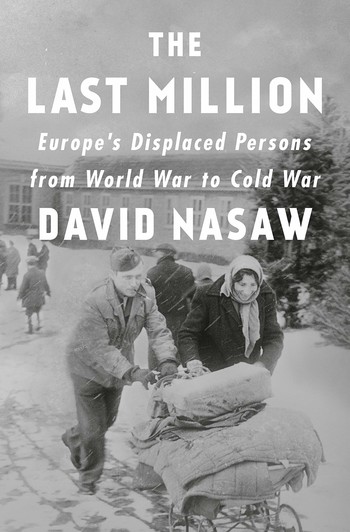In The Last Million, a tour de force of historical reckoning, historian David Nasaw ’72GSAS rubs the sepia off the gauzy images of triumph, liberation, and joy that live in our collective imagination of the Allied victory in Europe. In their place, Nasaw leaves us with a grim reality: the estimated seven million displaced persons (DPs) who were left stranded, malnourished, and utterly bereft in the wreckage that had been Nazi Germany. While most of this number eventually repatriated to their home countries, Nasaw, whose previous books include Pulitzer Prize–nominated biographies of Joseph P. Kennedy and Andrew Carnegie, zeroes in on the “last million” DPs who languished for up to five years in refugee camps, waiting to be resettled because they no longer had countries to return to. Among these were Poles, Ukrainians, and Balts who’d worked for the Nazis and now refused to return to Soviet-dominated homelands, as well as — most tragically — the quarter million Jewish survivors of the Holocaust, whose homes in Europe had vanished and who could not remain in the place where their families had been murdered.
One reads this prodigiously researched, multilayered story with ever-more-horrified fascination as the victorious Allies, having prevailed over the great evil of Nazism, proceeded to play politics and pass the buck — amid a global frenzy of anti-Semitism, xenophobia, and Cold War saber-rattling — while desperate people suffered. No country on earth seemed willing to open its borders to these stateless casualties of war. President Harry Truman tried to persuade Prime Minister Clement Attlee to open Palestine, then under a British mandate, to the Jewish survivors, but Attlee refused, fearful of arousing the ire of the UK’s allies in the Arab world. And Attlee, along with the leaders of Canada, Australia, and other Allied nations, posed a logical question: why should they accept these refugees when the US would not? (Truman was sympathetic to their plight, but Congress stood fast.)
Faced with severe postwar labor shortages, many of these countries came to recognize that the camps represented a rich source of workers and began recruiting DPs to work in agriculture, mines, and factories, and as nurses and domestic servants. Yet these laborers were rarely Jewish, in part because the job descriptions, with thinly veiled anti-Semitism, deliberately omitted work that Jews were thought suited for. In 1948, after years of dithering, the US Congress finally passed the Displaced Persons Act, though it too was designed to keep Jews out: the bill stipulated that only DPs who had entered Germany before December 22, 1945, were eligible for visas, thereby excluding 90 percent of the Jews in the DP camps. It also blocked anyone suspected of harboring Soviet sympathies — a charge leveled at Jews because many who’d survived had done so only because they’d escaped to the USSR during the war.
Meanwhile, reflecting the anti-Soviet fervor in postwar America, the 1948 bill eased visa restrictions for DPs from western Ukraine and the Baltic nations, whose homelands had been “annexed by a foreign power” (namely the USSR). As a result, thousands of Nazi collaborators and even war criminals immigrated to the US, a shocking number of whom went to work for the CIA, the US military, and other anti-communist organizations.
As for the Jews, their fate was inextricably bound up with the story of Palestine and its transformation into the modern state of Israel. Thousands of displaced Jews in Europe had undertaken the harrowing illegal journey to Palestine after the war, but Israel’s emergence as a nation — via the UN’s 1947 decision to partition Palestine and Truman’s immediate endorsement of that decision — hastened their exodus to a place they considered their historical homeland. (In the 1950s, nearly 57,000 of Europe’s displaced Jews also emigrated to the US.)
Yet Nasaw underscores the irony that the resettlement in Israel brought about the displacement of 750,000 Palestinians, who have been forced to live as refugees for generations. Indeed, the Allied victors, in their gross mishandling of World War II’s DP crisis, “paved a path the developed world would follow when confronted by similar refugee crises in the second half of the twentieth and the first quarter of the twenty-first centuries,” Nasaw asserts.
As this book so powerfully illustrates, the war in Europe did not end when the fighting stopped: the casualties mounted for years. Today we inhabit a world of endless war, where the fighting never stops. (Consider that an American college freshman in 2020 has not lived a single day when her country was not at war, and the same situation applies much more brutally to millions of other young people around the globe.) The terrible upshot is that there are currently nearly eighty million displaced people worldwide, or 1 percent of the world’s population. It’s safe to say that the dismal legacy of the last million is in no danger of fading.



